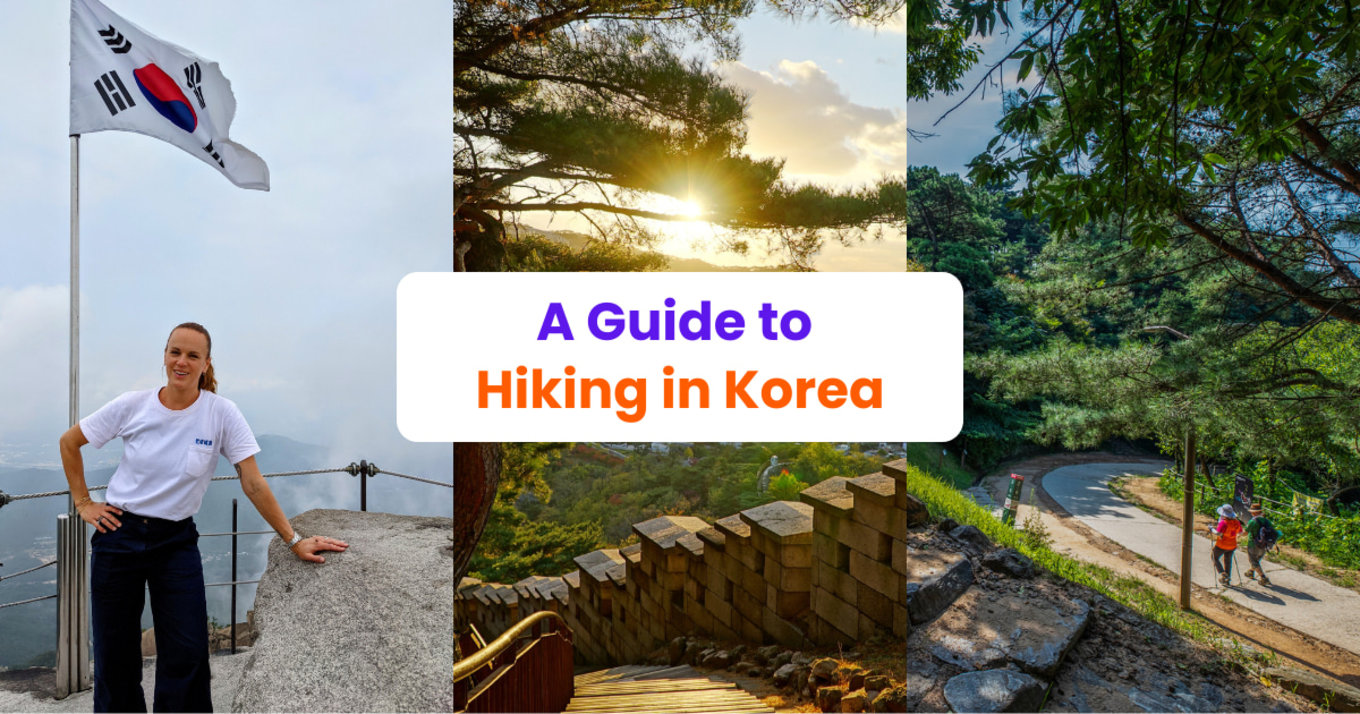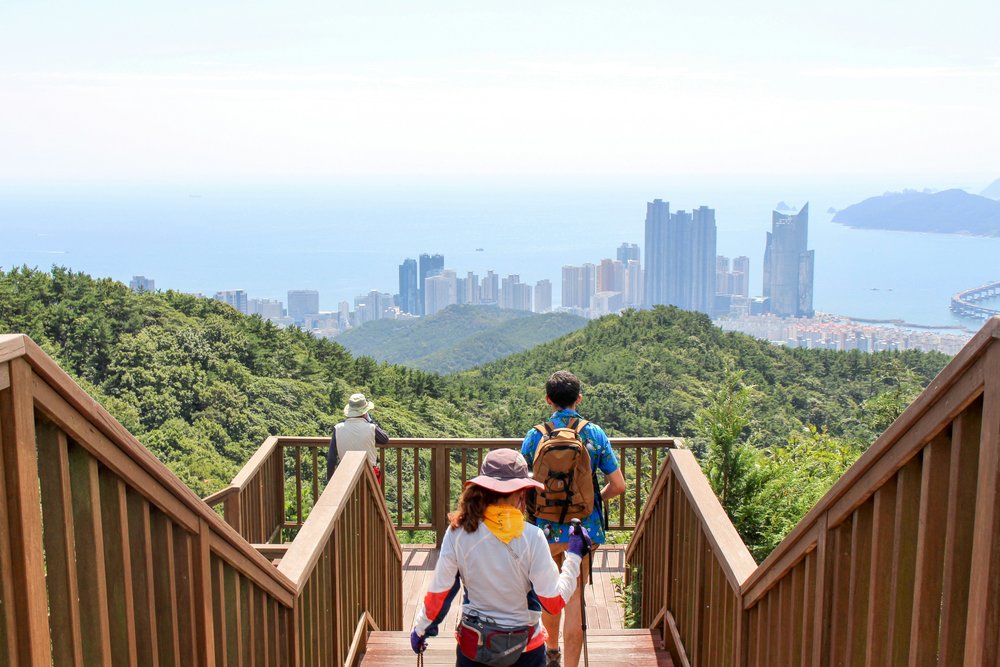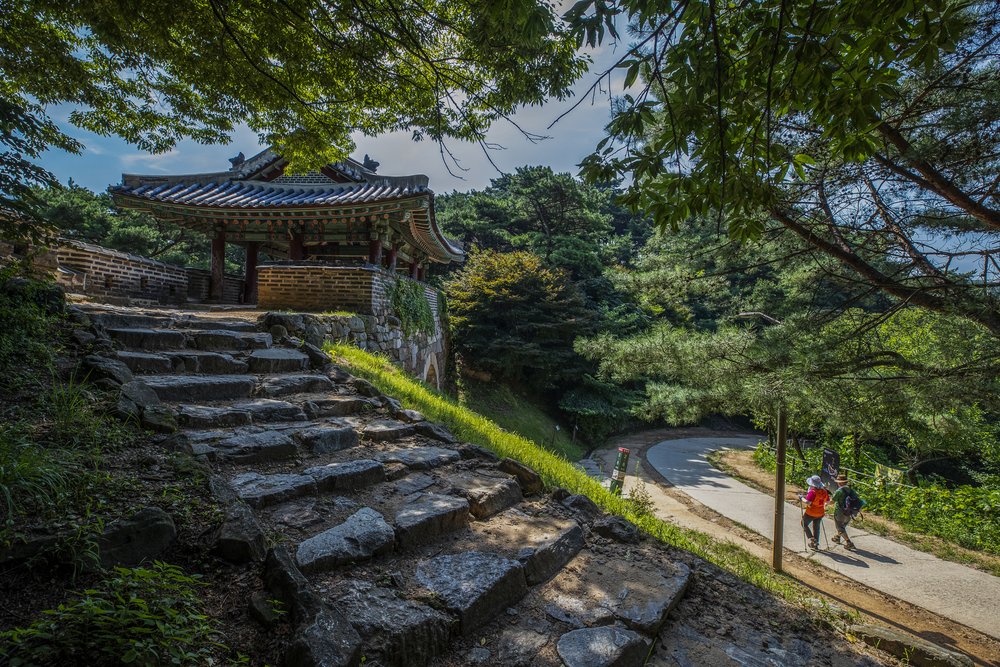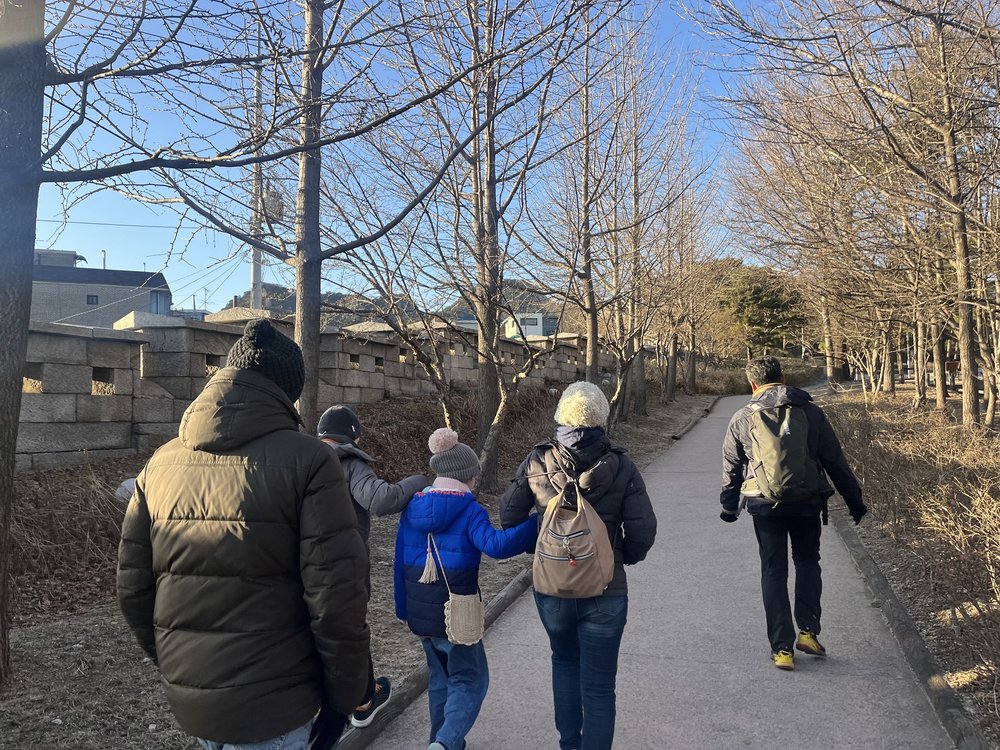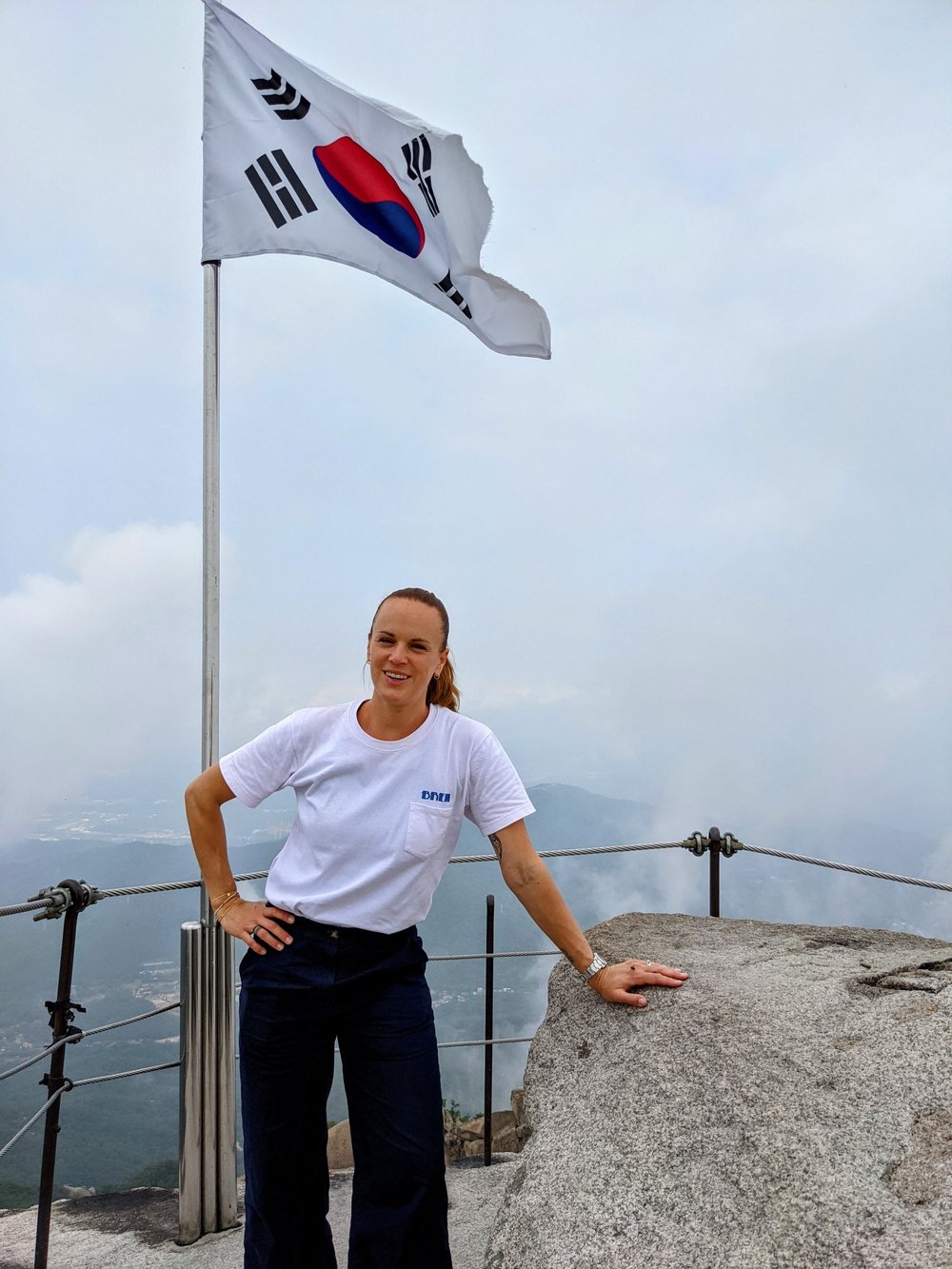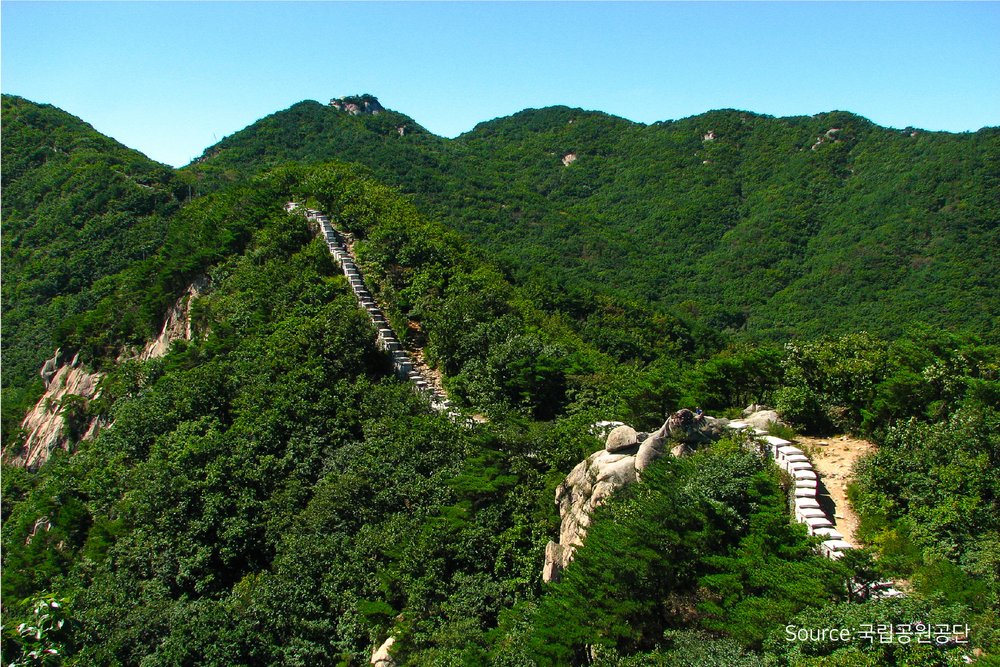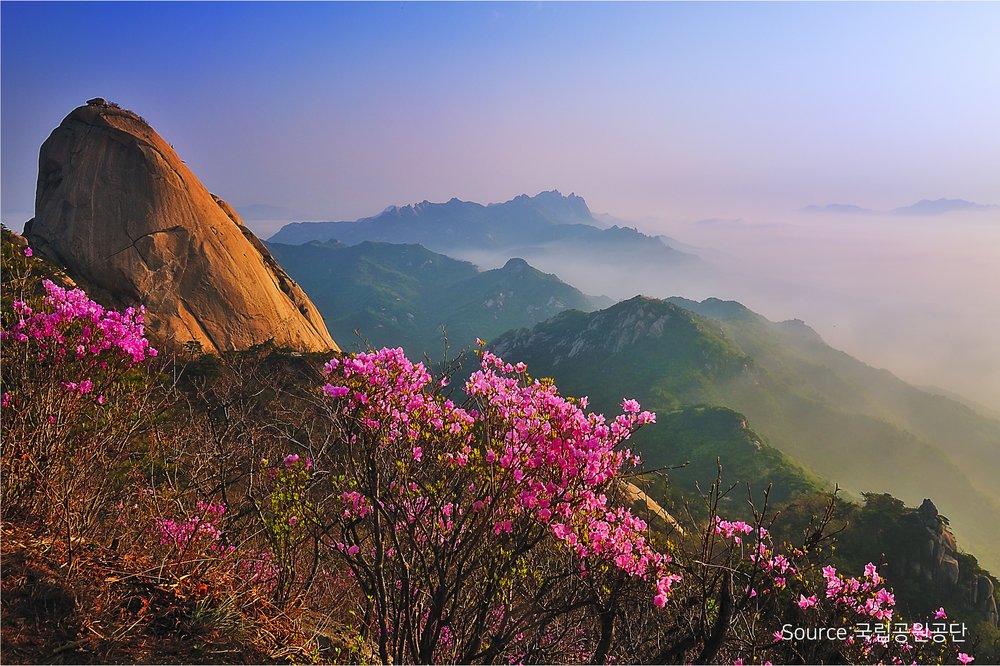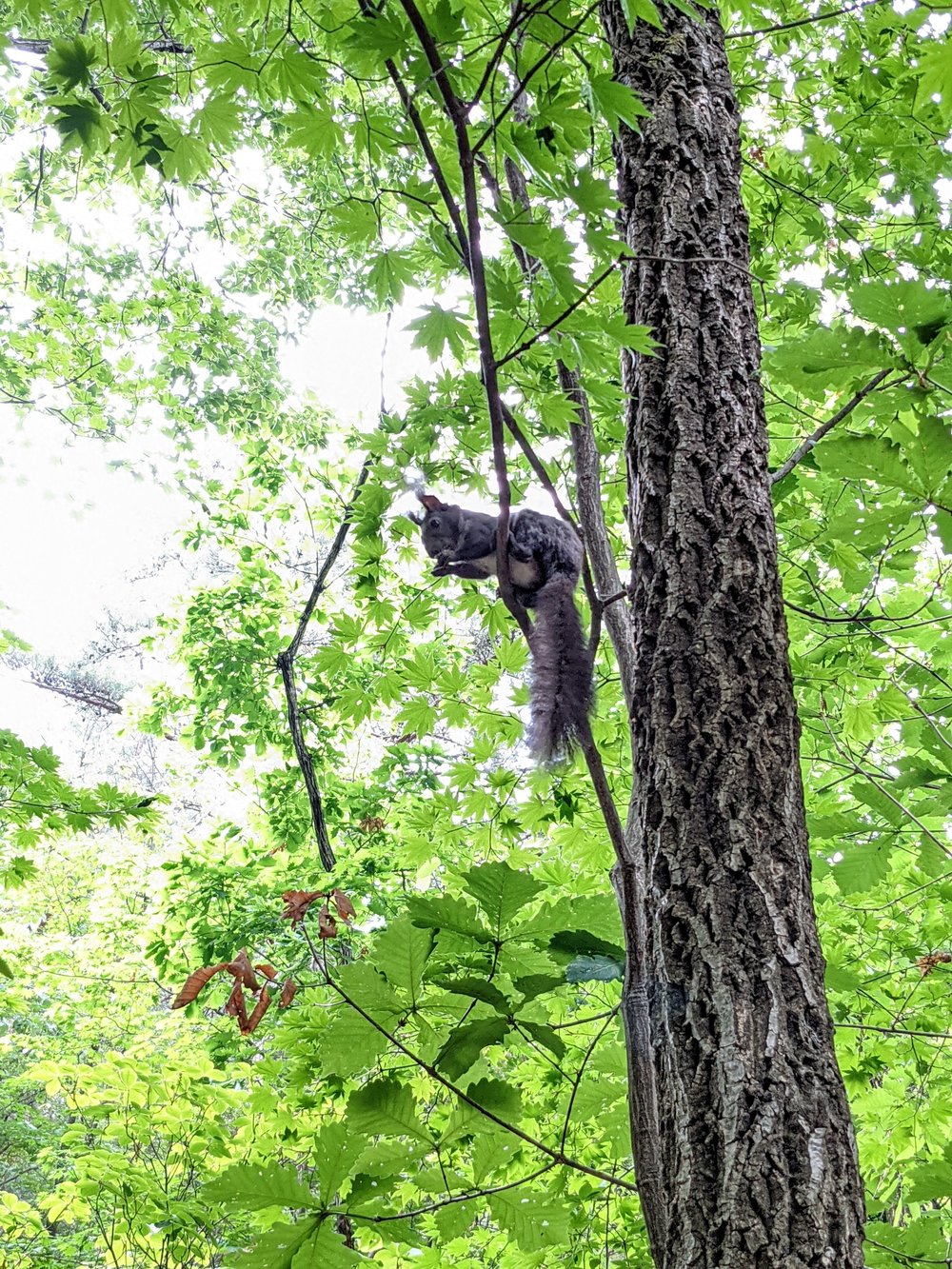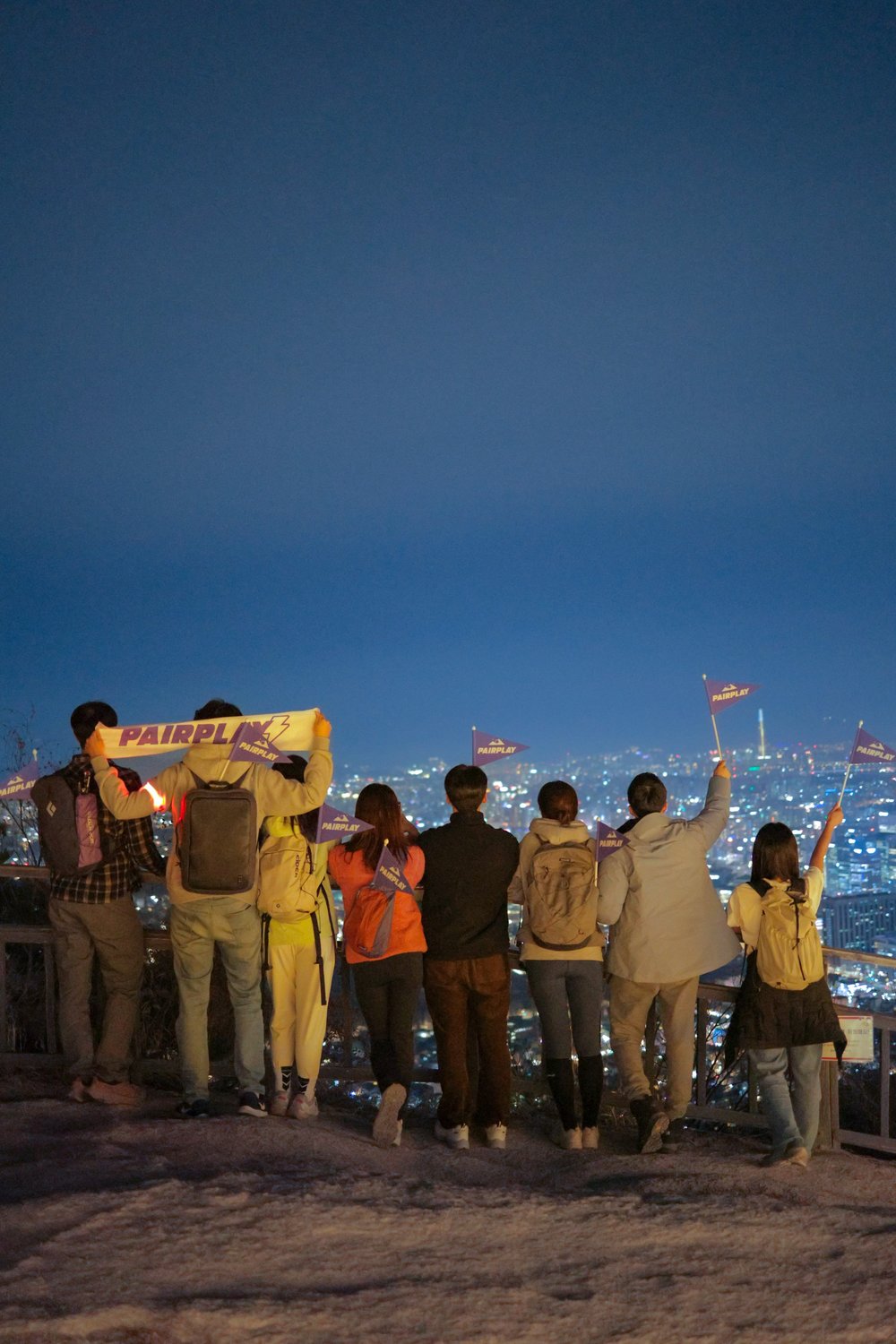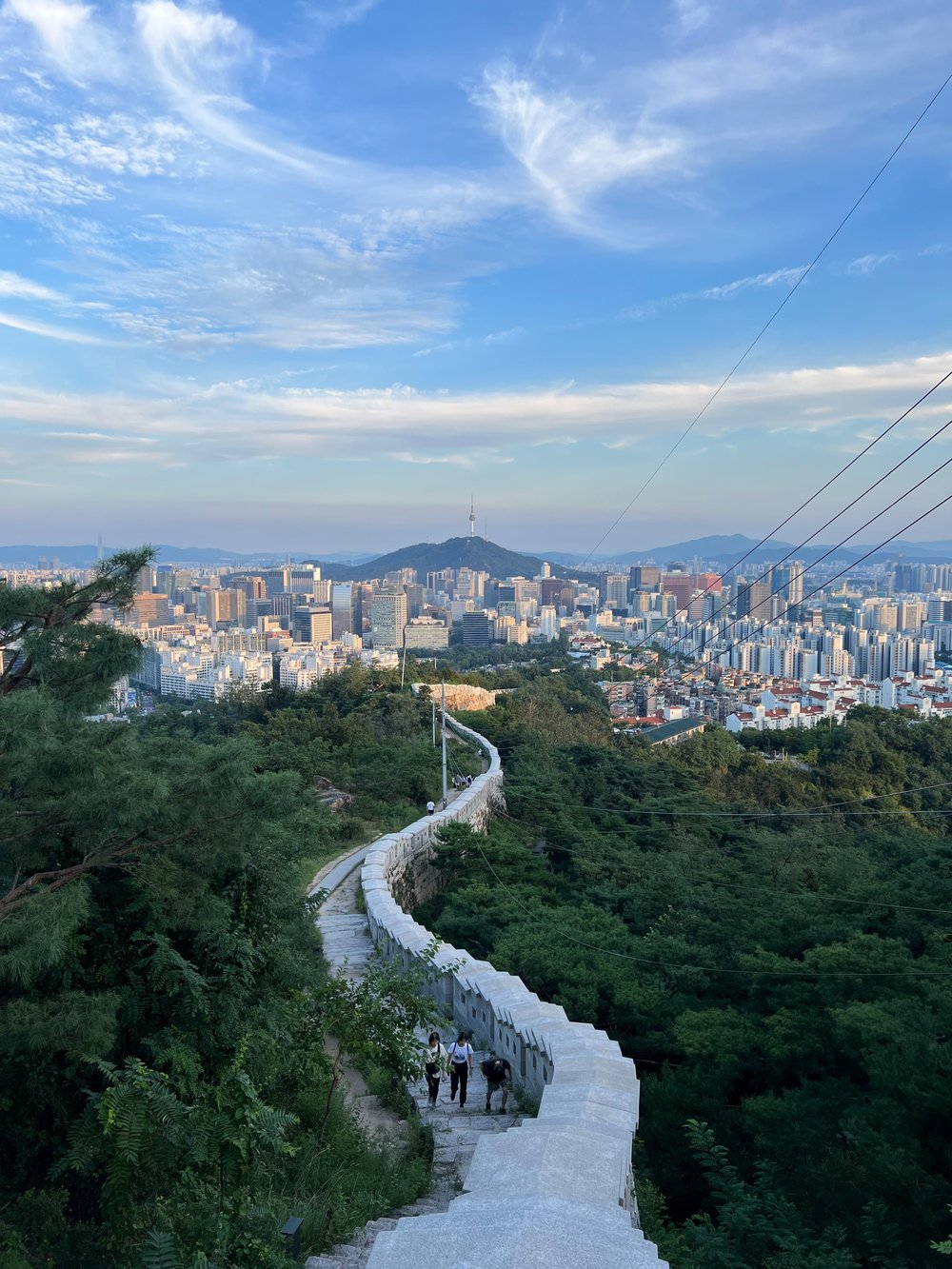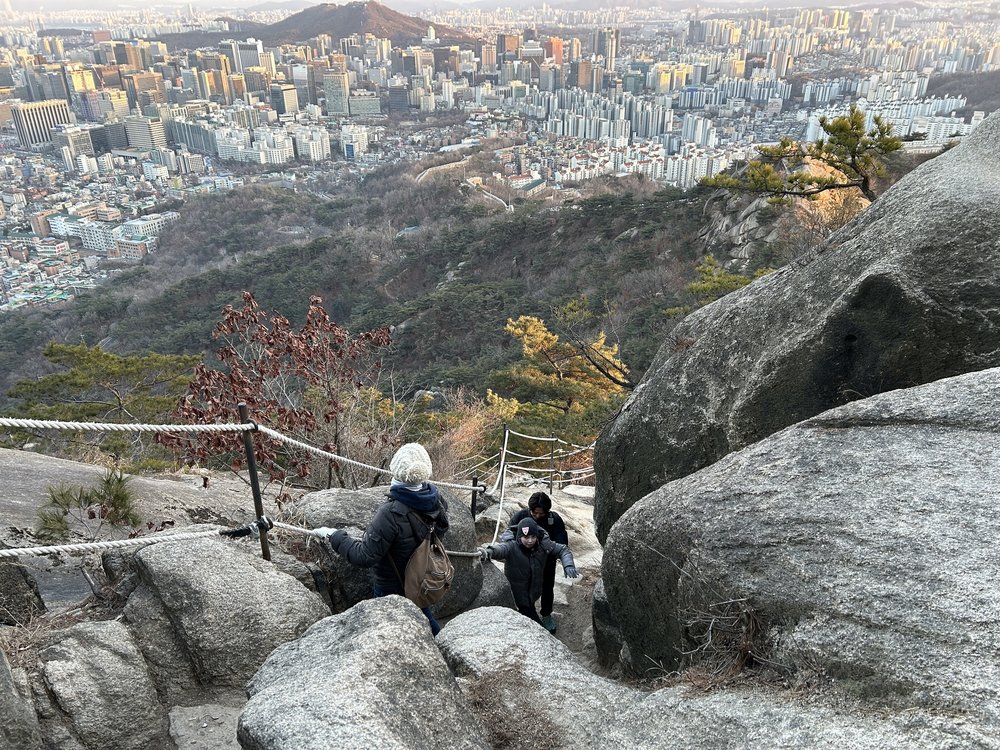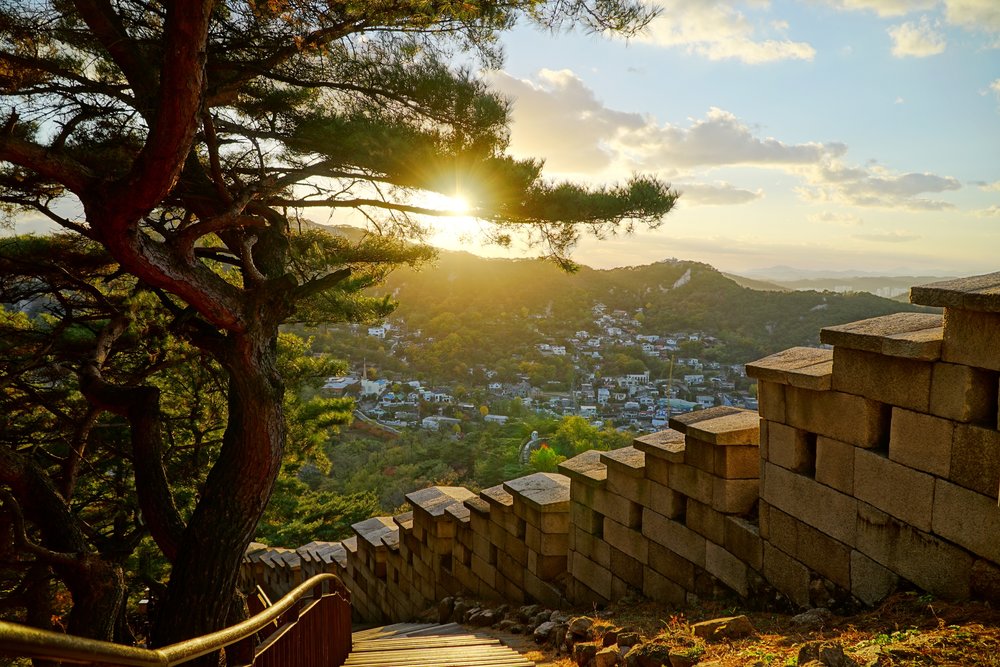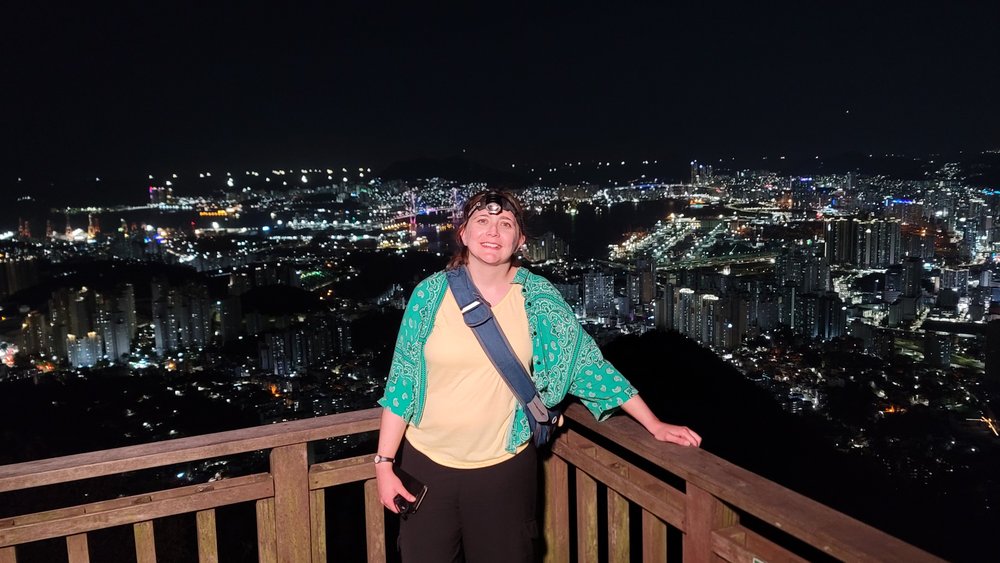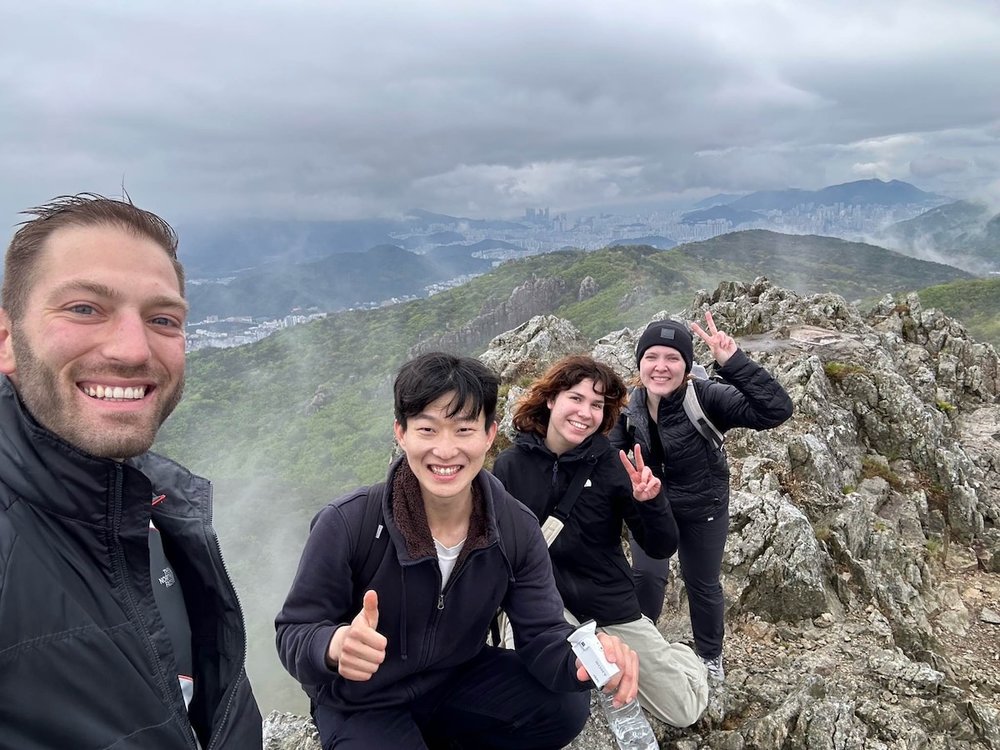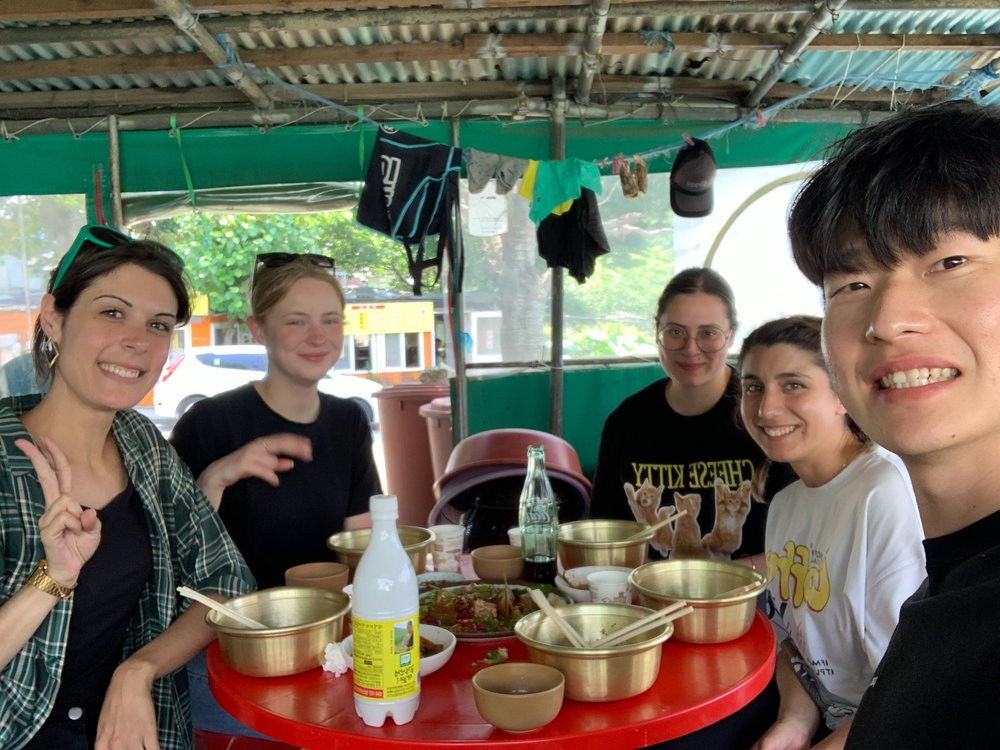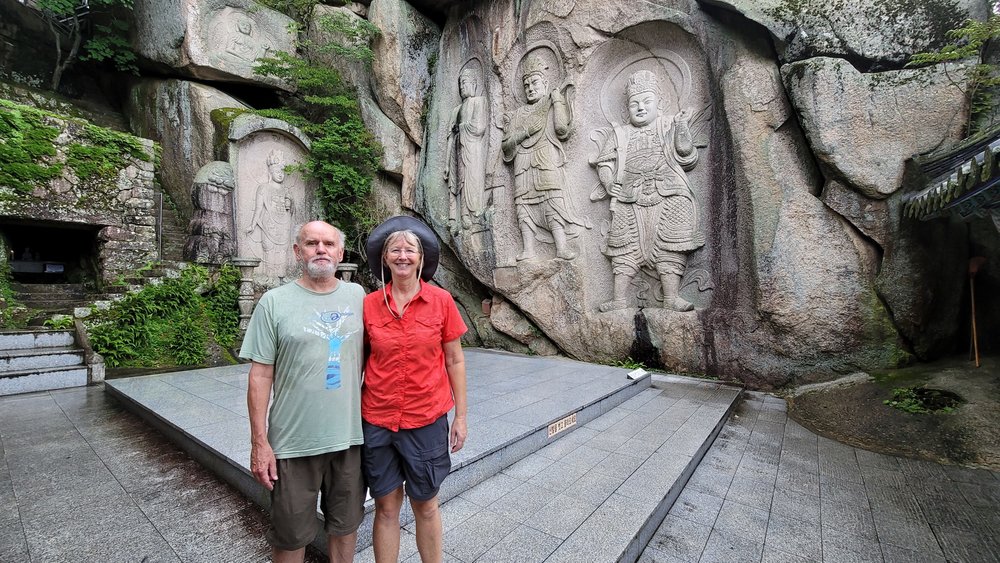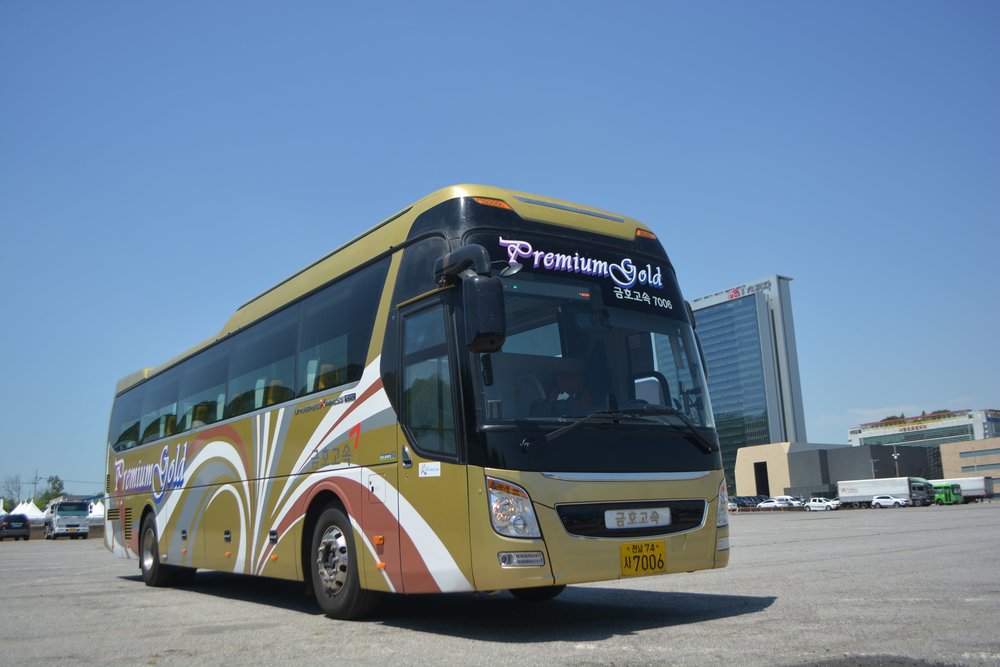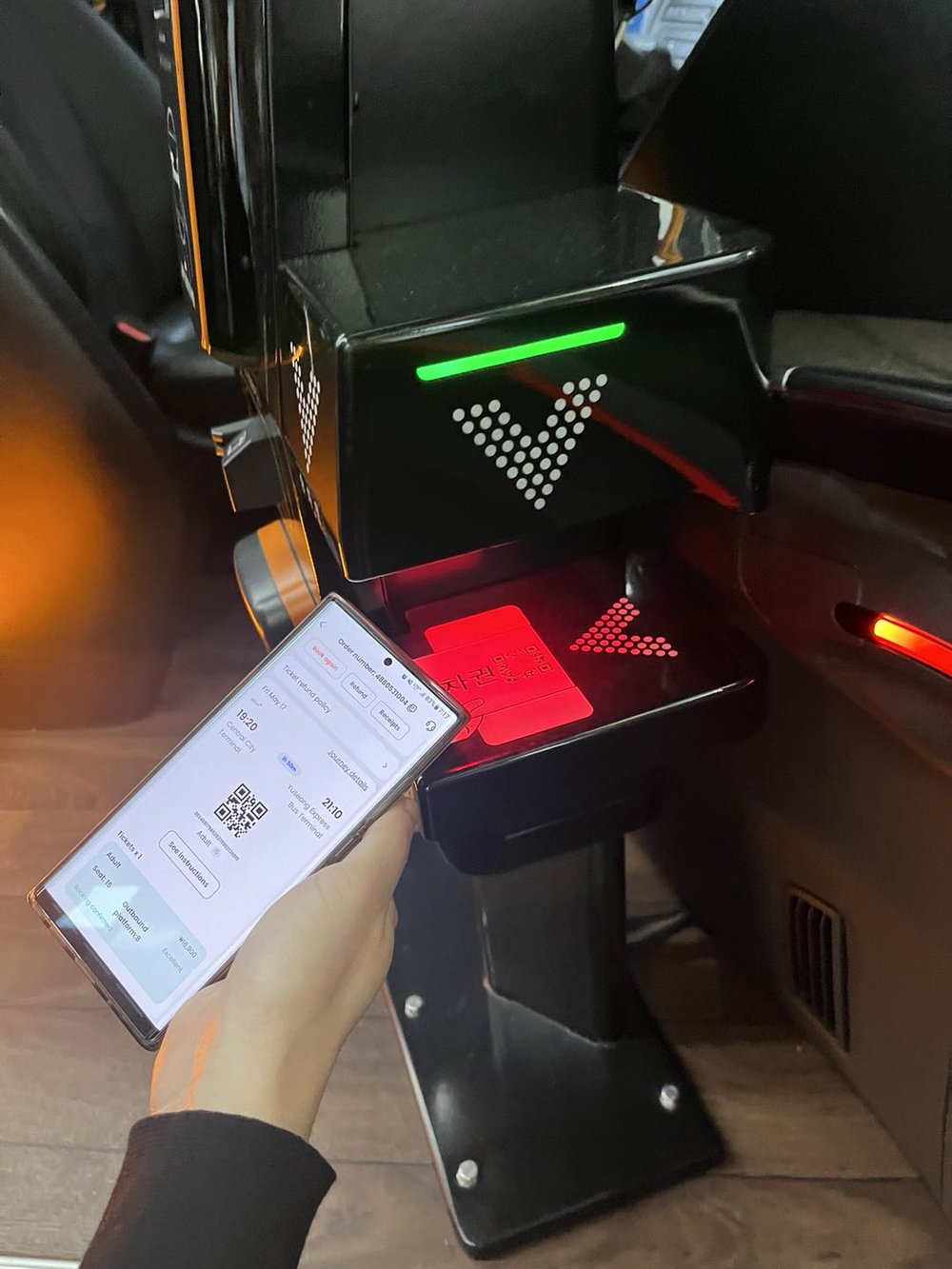Besides indulging in savory local food, shopping in Seoul, and exploring beautiful and fun attractions, hiking is another activity worth a spot on your list of things to do when in Korea! For those who don’t know, hiking is a way of life in the country. Locals make time to go on weekend hikes, which is quite convenient for them since Seoul is surrounded by mountains like Bukhansan and Inwangsan. The travel to get to these mountains is not as difficult and the hike isn’t as intense either. But still, you get to get your daily steps in plus marvel at stunning views when you reach the peak. If you want to know more about the significance of hiking in Korean culture, where to hike, and more, then continue reading! 😉
Hiking in South Korea ⛰️
The locals' dedication to one of their favorite outdoor activities is proof that it's an activity that's well-loved and well-known in the country. Hiking has easily become part of Korean culture since it is a known fact that Koreans enjoy healthy food and an equally healthy lifestyle. Hiking for them is not only a step towards healthy living but also something that they genuinely enjoy doing.
Even famous South Koreans like Gong Yoo, Ji Chang-wook, Son Ye-jin, Kim Se-jeong, and Lee Si-young are so into hiking that they encourage their fans to do it as well! But before going out there to hike, you have to list down your hiking essentials first. With that, here’s a list of things to prepare before hiking in Korea:
1. Light, waterproof jacket
2. A pair of sunglasses
3. Face towel
4. Insect repellant
5. Sunscreen / sunblock
6. Cap / hat
7. Water bottle
8. Hiking gloves
9. Hiking shoes / boots (if you’re not already wearing them)
10. Tissues / wipes
11. Hiking sticks
12. Small trash bags (just in case there are no trash bins around)
13. Cash
14. Light snacks (fruits, cereal bars, sweets, sandwiches, nuts, gimbap, etc.)
15. Phone
Important Reminders for a Great Hike 📝
Now that you know what to prepare, here are some tips to make your hike fuss-free:
1. Pack light: Carry a small bag and bring only your essentials. The heavier the bag, the more difficult the hike.
2. Stay hydrated: No matter the weather, you have to drink water! It’s essential to drink up to avoid getting dizzy during your hike.
3. Apply sunscreen before hiking: Even if there’s no sun during your hike, it’s highly recommended to still apply sunscreen / sunblock to protect your skin from UV rays.
4. Dress accordingly: Your comfortability will depend on what you decide to wear. Wear light and thin clothes in the summer, spring, and autumn. During winter, wear thicker clothes and layer them. It’s advisable to wear a thin but long-sleeved top in the summer to avoid sunburn.
5. Know where you’re going before going there: Make sure to plan your hike very well — know your route or ask the locals so you won’t get lost and you know whether or not the hike is doable for you.
6. Stay updated: Do your research. Some trails have designated opening hours to avoid crowding. Remember to check the weather forecast too.
7. Hike early in the morning: If you see that the trail that you want to take on is open early in the morning (like 5:00 am to 6:00 am), then go for it! You won’t only avoid big crowds, you’ll also be treated to stunning sunrise views.
8. Snap a photo of the hiking route provided at the start of your hike: It will be your guide throughout your journey.
9. Stretch: Do a full-body stretch to avoid body pain during or after your hike.
10. Take breaks: It’s a hike, not a race. Sit down, eat your snacks, or drink water whenever you feel the need to. It’s important to actively listen to what your body needs during your hike.
Where To Go Hiking in South Korea 🤔
You’re almost ready for your hike! But of course, your hike won’t be complete without a destination. While you can definitely find some good hiking spots near the city, some trails in other parts of Korea are worth visiting too! In this section, we’ll walk you through trails that you can choose from near Seoul and beyond. 🫡
Hiking Trails Near Seoul ✨
Bukhansan
1. Bukhansan National Park
This first park in Bukhansan is listed in the Guinness Book of World Records as the “Most Visited National Park per Unit Area.” Your hiking experience in Korea will not be complete without a visit to Bukhansan National Park — the highest peak near Seoul!
Each year, the national park caters to about five million visitors, hiking on different levels such as Easy, Moderate, Intermediate, Advanced, and Expert. This is a pretty good place for both first-time and expert hikers.
During your hike, you’ll see many photo spots where you can stop to capture memories! You might also stumble upon squirrels along the way, so when you do and want to take photos or videos of them, remember to turn your camera flashes off!
Duration of hike: About three hours
To make your hiking experience convenient, rent your gear instead of bringing your own! It will be easier to explore the city afterward without having to bring your gear around.
Inwangsan
2. Inwangsan Mountain
While hiking up Inwangsan Mountain is such a beautiful experience during the day, hiking here at night is just as memorable! This Inwangsan Mountain night hiking tour will take you through stunning night views, and once you reach the peak, you’ll be treated to sights like Cheongwadae (Blue House), Namsan Tower, and Gyeongbokgung Palace. And to those wondering, hiking up here is also beginner-friendly.
During your hike, try to spot some famous rock formations like Seonbawi (meditating monk rock), Chimabawi (skirt rock), and snail rock, just to name a few.
Now if you want to add more fun to your Inwangsan Mountain adventure, you can opt for this tour with a trip to Yeongcheon Traditional Market instead! You’ll first be taken to the local market to shop and snack. Make sure to try some local snacks like kkwabaegi (twisted Korean doughnuts), king crabs, steamed buns, and dumplings. You can also score some fresh produce here like bananas, oranges, and watermelon. After your trip to the market, you’ll then go on a night hike up the Inwangsan Mountain.
Wait, there’s more! For those who want to see the remarkable sunset atop Inwangsan Mountain, we have just the tour for you. This Inwangsan Mountain tour will also take you to see and explore Seoul at night, and have a delectable dinner at Sejong Village Food Street. The food street offers grilled meat and soju, chicken and beer, and many more.
There’s also a tour available that will take you to Bugaksan, another must-hike near Seoul! Once you reach Bugaksan’s peak, you’ll get to see the famous Seoul City Wall, known for being one of the gates to Seoul in the Joseon Dynasty.
Duration of hike: About two hours
Rent your gear here if you’re hiking up Bugaksan:
Hiking Trails in Busan 🌟
Hwangnyeongsan
1. Hwangnyeongsan Mountain
If you want to hike further away from Seoul, then climbing Hwangnyeongsan Mountain is something you should consider! Hwangnyeongsan Mountain is located in one of Korea’s most prominent cities, Busan. Once you reach the peak, you’ll be delighted to see Busan’s well-lit city and some famous beaches, Haeundae Beach and Gwangalli Beach. Travelers enjoy hiking the mountain at night to see Busan’s city lights, but we also recommend hiking late in the afternoon so you can catch the sunset.
Duration of hike: About three hours
Geumjeongsan
2. Geumjeongsan Mountain
Geumjeongsan Mountain has got to be the most famous peak in Busan! If you remember the Bukhansan Mountain in Seoul mentioned early on in the article, Geumjeongsan Mountain is its counterpart in Busan. The trail is not steep and will treat you to wonderful sights and sounds of nature like birds chirping and water flowing from the valley. Hiking here not only promises a good workout session but also a relaxing and serene experience.
At the end of your join-in hiking tour, you’ll pass by a mountain village where you can enjoy makgeolli (Korea’s traditional rice wine) with some scrumptious banchan (side dishes). If you join on a weekday, you’ll get a chance to witness the process of making makgeolli!
Now if you want to explore more than just Geumjeongsan Mountain, then this Geumjeongsan Mountain tour with a visit to Seokbulsa Temple is the one for you! This Buddhist temple is situated on Geumjeongsan Mountain, which means the views from the temple are simply breathtaking! As you explore the area, feel free to marvel at the intricately carved Buddha figures on rock walls and the 29 Buddha statues inside the temple. Your visit here will definitely tell you more about Korea’s culture so we highly recommend that you drop by!
Getting to and from Seoul and beyond 🚌
If your South Korea itinerary includes multiple hiking spots and national parks in one region and another, consider hopping on the Korea Intercity Bus. Foreigners can now easily book their intercity bus tickets without needing a Korean phone number! 🥳 Booking on Klook allows tourists to easily select their preferred slots and pay with their payment of choice – whether it be PayPal (YES, PayPal!), Apple Pay, Visa, MasterCard, and more.
The intercity bus has multiple stops throughout the country like Daegu, Gangwon Province, Jeon-ju, and Gyeongju, making it convenient to get where you need to go. You can check if your destination has a stop and what schedule is available on the date you want here.
Once you complete your booking, you'll immediately get a mobile ticket, so no need to print out or exchange for a physical one! You just have to scan your ticket's QR Code upon boarding the bus.
With all the tips, reminders, and recommendations we listed here, you’re finally ready to go hiking in Korea! But hey, before you go, make sure to secure your travel essentials first:
🇰🇷South Korea Essentials🇰🇷
🚄Trains & Airport Transfers
🚇Transportation & Prepaid Cards
Frequently Asked Questions
1. Why is hiking so popular in Korea?
Many South Koreans enjoy hiking for many reasons, some of which are:
- Nature's beauty: Korea boasts stunning landscapes, from lush forested mountains, cascading waterfalls, and beautiful mountain peaks to serene lakes.
- Cultural Significance: Many Korean mountains have deep cultural and historical significance, often associated with ancient legends, temples, and mountain spirits.
- Accessibility: Korea has a well-developed network of hiking trails, making it easy for people of all ages and fitness levels to enjoy the outdoors.
- Health Benefits: Hiking is a great way to exercise, improve mental health, and connect with nature.
2. What is the best time for hiking in the mountains in South Korea?
The best time for hiking in South Korea depends on your preferences and the area where you want to visit. Most hikers usually go in the Spring and Fall but here's a general guideline on what to expect throughout the year:
- Spring (March-May): Witness beautiful blooms like the famous cherry blossoms and canola flowers and expect mild temperatures.
- Summer (June-August): Experience lush greenery and vibrant festivals, although be prepared for some rain and high humidity.
- Autumn (September-November): See breathtaking fall foliage and pleasant weather.
- Winter (December-February): You'll get to see snow-covered landscapes and enjoy a unique hiking experience but be prepared for the cold as Korea's known to have very cold winters.
3. What is the longest hiking trail in South Korea?
The longest hike in South Korea is the Haeparang Trail, which stretches along the country's east coast from Busan to the DMZ. This trail is approximately 770 kilometers (478 miles) long.
4. What is the easiest hike in South Korea?
The easiest hike in Korea will really depend on your fitness level and experience, here are some popular hiking trails that are known to be beginner-friendly:
- Bukhansan National Park: Located near Seoul, this park offers easy trails with stunning views of the city.
- Namsan Park: A popular destination for locals and tourists, Namsan Park has gentle slopes and well-maintained trails.
- Daegu Forest Park: This urban park features paved trails and accessible facilities, making it a great choice for families and beginners.

